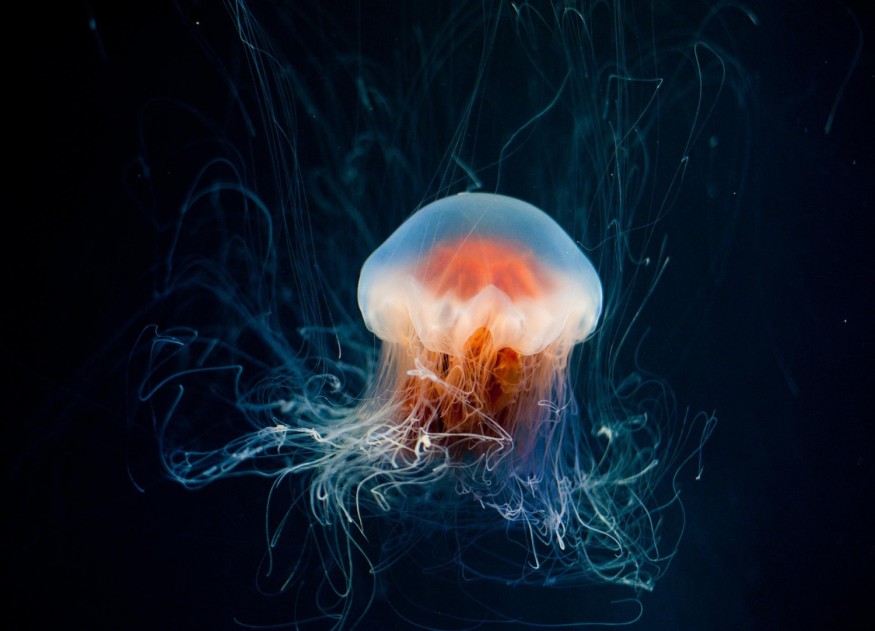The Turritopsis dohrnii's (T. dohrnii) genetic code was mapped by a group of researchers under the direction of the University of Oviedo in Spain. They discovered that, in contrast to other jellyfish species, this one retains its immortality after reaching sexual maturity because it has twice as many genomes involved in DNA copying and repair.

Jellyfish Species Turritopsis Dohrnii Gene Features
According to the Daily Mail, when a predator is present, the jellyfish uses its genes to transform back into a cyst, form a polyp connected to the seafloor, and resume its development once the danger has passed.
As the only animal of its kind capable of going back to its juvenile condition and developing back to an adult throughout its entire life, this so-called immortal jellyfish may hold the key to human anti-aging. T. dohrnii's capability, which has just come to the attention of researchers (at least 15 years), is a strong candidate for helping us understand how humans age.
T. dohrnii has a two-stage life cycle similar to other varieties of jellyfish, spending its asexual phase on the ocean floor, where its main objective is to survive during periods of food scarcity. Jellyfish can reproduce sexually if the circumstances are correct.
Research Findings on Turritopsis Dohrnii Anti-Aging Capability
The goal of the research is to better understand the keys and limits of the remarkable cellular plasticity that allows some species to be able to travel back in time, not to harvest the marine animal and use it as a skin treatment.
The researchers reported their findings in a study that was recently published in the Proceedings of the National Academy of Sciences. They noted that while many types of jellyfish have some capacity to reverse aging and return to a larval stage, most jellyfish lose this ability once they reach sexual maturity.
The report adds that T. dohrnii is the lone species that maintains its great rejuvenation potential (up to 100%) throughout postreproductive stages, approaching biological immortality.
Scientific Process Conducted to Understand Turritopsis Dohrnii's Mechanism
The immortal jellyfish's genome was initially sequenced by researchers, and the outcomes were then compared to those of the Turritopsis rubra. Although they are both connected, the latter does not have the same revitalizing power.
Nearly 1,000 genes related to aging and DNA repair were examined and compared in both samples.
According to the data, the immortal jellyfish can avoid death because it has twice as many copies of genes related to DNA repair and protection.
These duplicates might generate more regenerative and protective proteins. Additionally, T. dohrnii is better able to protect the telomeres, which are the ends of chromosomes. Telomere length decreases with aging in humans and other mammals.
Monty Graham, a jellyfish expert and director of the Florida Institute of Oceanography, didn't see that they were going to harvest the jellyfish and make them into a skin cream. Instead, they want to understand the mechanisms and protein functions that enable these jellyfish to avoid death. This makes it extremely important.
Related Study on Anti-Aging
In April 2022, Bloomberg posted a study showing that scientists have reversed 30 years of human skin cell aging. Scientists claim to have created a technique that can time jump human skin cells by three decades, which is longer than previous reprogramming techniques and stops the aging process without the cells' functionality being lost.
The study found that the partially rejuvenated cells showed symptoms of acting more like youthful cells in studies that mimicked skin lesions.
The scientists foresee that the ability to directly target genes that regenerate without reprogramming to lessen the symptoms of aging may one day be possible. This strategy shows promise for significant discoveries that may widen the scope of possible treatments.
RELATED ARTICLE: A Study Showed Metformin Anti-Aging Benefits
Check out more news and information on Medicine and Health in Science Times.












